Otoplasty in Ho Chi Minh City
Search and Compare the Best Clinics and Doctors at the Lowest Prices for Otoplasty in Ho Chi Minh City

Find the best clinics for Otoplasty in Ho Chi Minh City
No pricing info available
Egypt offers the best prices Worldwide
Price: $ 100
From 15 verified reviews
Trung Hoang, 21 September 2019
The eyelid nose in GNG is very full, the height is high enough so it looks very natural
From 10 verified reviews
Andrew Gascoigne, 28 December 2019
This place is amazing! The Dentists, Doctors and all the staff are wonderful. They are extremely professional and have a range of modern medical equipment. They even ordered a motorcycle to pick up some food for me. I am totally impressed with my experience here and I have no problems recommending the EMCAS Hospital.
Compare Before & After Photos of _procedure_photos.phpOtoplasty
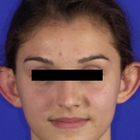
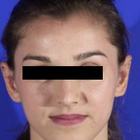
Front view
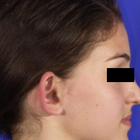
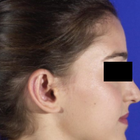
Full-side view
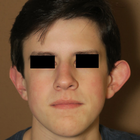

Front view

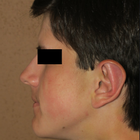
Full-side view
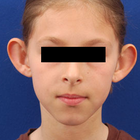
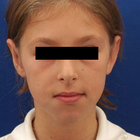
Front view
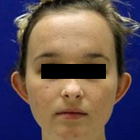
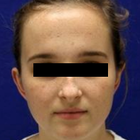
Front view
WHY US?
At Medijump, we're making medical easy. You can search, compare, discuss, and book your medical all in one place. We open the door to the best medical providers worldwide, saving you time and energy along the way, and it's all for FREE, no hidden fees, and no price markups guaranteed. So what are you waiting for?

Free

Best Price

Widest Selection

Risk-Free
What you need to know about Otoplasty in Ho Chi Minh City

Otoplasty, also referred to as cosmetic ear surgery, is a type of cosmetic procedure to change the size, shape, or position of the ear. It is performed on the visible part of the outer ear, called auricle. Some people choose to have the surgery to correct odd-shaped ears due to an injury or birth defect. Others have it because they are concerned with how their ears protrude too far from their head. Otoplasty can be performed at any age after the ears have reached their full size, generally after age 5. In some cases, the surgery may be done as early as age 3.
There are several types of otoplasty. The following are the most common:
- Ear pinning draws the ears closer to the head. It is usually done on people whose ears stick out too far from their head.
- Ear augmentation is ideal for individuals whose ears are small or have not completely developed. This type of otoplasty can increase the size of the outer ear.
- Ear reduction is usually done on people with macrotia, which is a condition when the ears are larger than normal. Otoplasty can reduce the size of the ears.
What does a Otoplasty Procedure Involve?
Otoplasty is typically carried out under local anesthesia with a sedative, so you will be awake but you will not feel any pain. In some cases, general anesthesia may be used, typically for younger children.
The techniques used by your surgeon vary based on the type of otoplasty you are having. In general, your surgeon makes an incision either within the inner creases of your ears or on the backs of your ears. Then, your surgeon manipulates the tissue of the ear, which may include removal of cartilage or skin, grafting of cartilage to the ear, or folding and shaping of cartilage using permanent stitches. Once your surgeon is done correcting the shape, size, and position of your ears, the incisions are closed with stitches.
How Long Should I Stay in Ho Chi Minh City for a Otoplasty Procedure?
Otoplasty can take between 1 and 3 hours to perform, depending on the complexity and the specifics of the procedure. It is typically done as an outpatient procedure, which means you can leave the hospital on the same day. It is recommended that you stay in Ho Chi Minh City for 7 more days for follow-up checkups and removal of stitches.
What's the Recovery Time for Otoplasty Procedures in Ho Chi Minh City?
The recovery period may vary from one person to another. You may experience numbness for several weeks, and mild bruising for about 2 weeks. For several months, your ears may feel stiff and sore.
You should be able to go back to work and resume your normal activities, including exercise, within one to two weeks after surgery. Physical contact sports, such as rugby, football, or judo, should be avoided for at least 3 months. You should also avoid swimming for up to 8 weeks following your otoplasty.
What sort of Aftercare is Required for Otoplasty Procedures in Ho Chi Minh City?
Your surgeon will provide post-operative instructions. Make sure to follow the instructions carefully to promote smooth and quick recovery. You should rest with your head elevated on 2-3 pillows to minimize swelling. It is recommended that you eat a light, soft, and cool diet for several days. Take pain medication as prescribed by your doctor. Avoid sleeping on your side or rub the incisions to keep pressure off your ears. Consider wearing shirts with loose-fitting collars or button-down shirts.
What's the Success Rate of Otoplasty Procedures in Ho Chi Minh City?
Otoplasty is a safe and effective procedure, with high satisfaction rates. More than 90% of people who had the procedure claimed to be extremely happy with the results. Note that it may take some time for the result to be fully visible.
While it is a safe procedure, you still need to be aware of possible risks and complications that otoplasty carries. These include bleeding, hematoma formation, infection of the skin, infection of the cartilage of the ear, permanent or temporary numbness around the affected area, scar or keloid formation, unfavorable results, prolonged pain, narrowing of the external ear canal, impaired healing, changes in skin sensation, asymmetry, and overcorrection.
Are there Alternatives to Otoplasty Procedures in Ho Chi Minh City?
There are not many viable alternatives to otoplasty as of yet. One of the most popular alternatives is nonsurgical otoplasty, which does not require any incisions. The procedure uses special sutures to pin the ears back and achieve a more symmetrical look. These sutures are woven into the ears and will remain in place permanently. They are also virtually invisible, so the results will look natural.
For babies under three months old with prominent ears, ear-molds can be taped to their ears to reshape the ears without surgery. This type of treatment typically takes about six to eight weeks.
What Should You Expect Before and After the Procedure
Before otoplasty, you may have prominent or large ears or other deformity caused by an injury or birth defect that bothers you. Some people also feel self-conscious and embarrassed by the shape, size, and position of their ears. After the procedure, your ears will be corrected. Small or underdeveloped ears will be augmented to increase the size, the size of large ears will be reduced, and prominent ears will be drawn closer to the head. Your appearance will improve and you may feel more confident.
Whilst the information presented here has been accurately sourced and verified by a medical professional for its accuracy, it is still advised to consult with your doctor before pursuing a medical treatment at one of the listed medical providers
No Time?
Tell us what you're looking for and we'll reachout to the top clinics all at once
Enquire Now

Popular Procedures in Ho Chi Minh City
Prices Start From $28

Prices Start From $1,945

Prices Start From $120

Prices Start From $275

Recommended Medical Centers in Ho Chi Minh City for Otoplasty

- Interpreter services
- Translation service
- Religious facilities
- Medical records transfer
- Medical travel insurance
- Health insurance coordination
- TV in the room
- Safe in the room
- Phone in the room
- Private rooms for patients available

- Interpreter services
- Translation service
- Religious facilities
- Medical records transfer
- Medical travel insurance
- Health insurance coordination
- TV in the room
- Safe in the room
- Phone in the room
- Private rooms for patients available

- Interpreter services
- Translation service
- Religious facilities
- Medical records transfer
- Medical travel insurance
- Health insurance coordination
- TV in the room
- Safe in the room
- Phone in the room
- Private rooms for patients available

- Interpreter services
- Translation service
- Religious facilities
- Medical records transfer
- Medical travel insurance
- Health insurance coordination
- TV in the room
- Safe in the room
- Phone in the room
- Private rooms for patients available

- Interpreter services
- Translation service
- Religious facilities
- Medical records transfer
- Medical travel insurance
- Health insurance coordination
- TV in the room
- Safe in the room
- Phone in the room
- Private rooms for patients available

- Interpreter services
- Translation service
- Religious facilities
- Medical records transfer
- Medical travel insurance
- Health insurance coordination
- TV in the room
- Safe in the room
- Phone in the room
- Private rooms for patients available

- Interpreter services
- Translation service
- Religious facilities
- Medical records transfer
- Medical travel insurance
- Health insurance coordination
- TV in the room
- Safe in the room
- Phone in the room
- Private rooms for patients available

- Interpreter services
- Translation service
- Religious facilities
- Medical records transfer
- Medical travel insurance
- Health insurance coordination
- TV in the room
- Safe in the room
- Phone in the room
- Private rooms for patients available

- Interpreter services
- Translation service
- Religious facilities
- Medical records transfer
- Medical travel insurance
- Health insurance coordination
- TV in the room
- Safe in the room
- Phone in the room
- Private rooms for patients available

- Interpreter services
- Translation service
- Religious facilities
- Medical records transfer
- Medical travel insurance
- Health insurance coordination
- TV in the room
- Safe in the room
- Phone in the room
- Private rooms for patients available
Otoplasty in and around Ho Chi Minh City
About Ho Chi Minh
Ho Chi Minh City also referred to by its former name of Saigon, is Vietnam’s largest city. Although it is busy and chaotic, the city is actually teeming with wonderful shops, intriguing history, delicious food, and fantastic nightlife. While many people normally come to the city to explore its temples and museums, there’s also a growing trend of medical tourism. More and more people are coming to the city to take advantage of healthcare. One of the main reasons behind Ho Chi Minh’s emerging popularity in medical tourism is affordable prices. It’s more affordable to have any treatment performed here than in Thailand and Singapore.
Popular Parts of Ho Chi Minh
There are 19 districts in Ho Chi Minh, but the most popular one is District 1 (also known as Saigon District), which serves as the city center. Here, visitors can find bars, restaurants, cafés, and iconic landmarks. Some of the most popular attractions in this district are the Bitexco Tower Skydeck, the Independence Palace, the Notre Dame Cathedral and Post Office, Bui Vien Street, and Nguyen Hue Walking Street. Besides District 1, Chinatown or Cholon is also very popular as it is home to the biggest Chinese community in this country, and Binh Tay Market is its main draw. Full of great food, history, and wonderful sights, this area is an excellent place to wander around and have fun.
Transport in Ho Chi Minh
The main gateway to Ho Chi Minh is the Tân Sơn Nhất International Airport, which is the busiest airport in Vietnam. It serves flights to and from numerous cities in Asia, including Bangkok, Singapore, and Seoul. There are also several low-cost airlines available for budget travelers, such as VietJet Air and Jetstar Pacific Airlines. To get around the city, buses, taxis, Xe Om (motorcycle taxis), Cyclos, and Grab Taxi (similar to Uber) are available. Buses are comfortable, but taxis and Grab Taxi are the easiest way to travel around. Xe Om and Cyclos are affordable, but they tend to be suitable for short-distance trips only.
Visas in Ho Chi Minh
Vietnam allows citizens of 24 countries, including the UK, Denmark, and Cambodia, to enter and stay in the country for up to 90 days without a visa. Other nationalities need to apply for a visa. The country has an electronic visa system available for citizens of 81 countries.
Weather in Ho Chi Minh
Ho Chi Minh has a tropical monsoon climate and the average temperatures remain all year round. December to March is the dry season, with the temperatures ranging from 21°C to 34°C. May to September is the wet season, which experiences frequent rain showers. July to November is the peak period for typhoons.
Additional Info
- Local Currency: The official currency is the Vietnamese Dong (VND). 1 USD is equivalent to 23,270 VND.
- Money & Payments: ATMs are widespread. Credit cards are accepted at most hotels, but always bring cash with you. Tipping is appreciated, but not expected.
- Local Language: The official language is Vietnamese. English is widely spoken, particularly in tourist areas.
- Local Culture and Religion: The constitution provides for freedom of worship. Vietnamese folk religion is a major religion, but many people are not religious. Other religions, such as Buddhism and Christianity, are freely practiced.
- Public Holidays: New Year’s Day, Tet Holiday, Reunification Day, International Labor Day, and National Day are some of the most celebrated holidays in Ho Chi Minh.
Popular Searches
- Plastic Surgery in Thailand
- Dental Implants in Thailand
- Hair Transplant in Thailand
- Breast Augmentation Thailand
- Gastric Sleeve in Thailand
- Gender Reassignment Surgery in Thailand
- Laser Hair Removal in Bangkok
- Botox in Bangkok
- Dermatology in Bangkok
- Breast Augmentation in Bangkok
- Coolsculpting in Bangkok
- Veneers in Turkey
- Hair Transplant in Turkey
- Rhinoplasty in Turkey
- Stem Cell Therapy in Mexico
- Rhinoplasty in Mexico
- Liposuction in Mexico
- Coolsculpting in Tijuana
- Rhinoplasty in Korea
- Scar Removal in Korea
- Gastric Sleeve in Turkey
- Bone Marrow Transplant in India
- Invisalign in Malaysia
- Plastic Surgery in the Dominican Republic
- Tummy Tuck in the Dominican Republic
- Plastic and Cosmetic Surgery in Poland
- Rhinoplasty in Poland
- Hair Implant in Poland
- Dental Implants in Poland
- IVF in Turkey

